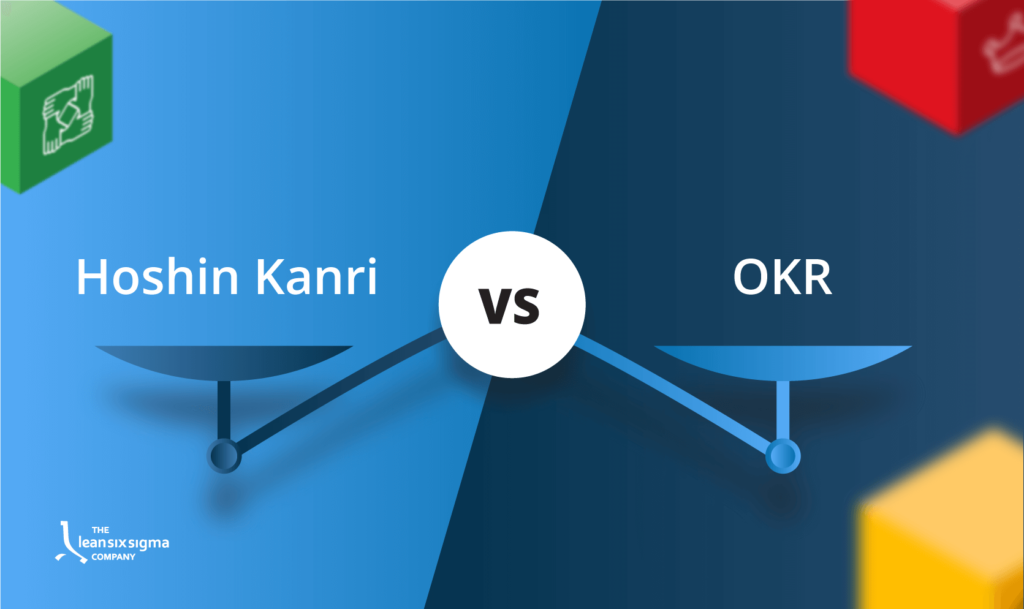
Lean Six Sigma Can Help You Survive A Crisis
To survive, you must adapt. To adapt, you must improve. To improve, you must organize.
This mantra briefly summarizes the operational excellence philosophy of Continuous Improvement, a philosophy that stands at the center of many business improvement methodologies, including Lean Six Sigma.
History is a circle
The idea of Continuous Improvement is more relevant today than ever, as it was conceived specifically to help businesses and organizations to survive economic difficulties. Consider the Toyota Production System, which was conceived during the aftermath of WWII, when Japan’s industry lay in ruins, yet still had to contend against Ford’s legacy of horizon-spanning assembly lines and juggernaut factories. Similarly, look at the origins of Six Sigma, originally a response to Motorola’s declining financial results and glaring issues with production quality.
Today, much like in the past, we face turbulent times and the possibility of economic decline. Living through them, we often find it easier to blow things out of proportion, exclaiming that the perils are unprecedented or impossible to recover from. Whatever the truth, one thing is certain, namely that the situation is quite simply ‘uncertain’, which may be more frightening than all those doomsday scenarios combined. In uncertain times, much like people, organizations tend to resort to drastic measures; cost-cutting at every corner, mass lay-offs, re-organizations, all typical knee-jerk reactions to economic uncertainty.
Habits are hard to break
Typical responses are to kill once-popular darlings such as training budgets, research and development, maintenance routines, and most importantly, a total freeze-stop on anything remotely related to Operational Excellence. A prime example would be Europe’s major airports, which were once valued for their tight organization and quick lead times, yet soon found themselves reduced to mere shadows of their former selves. When faced with the uncharted territories of global pandemic, their knee-jerk reaction of choice was to resort to mass lay-offs and deprioritize operational excellence.
The result anno 2022? Check-in queues resembling Disney World’s Thunder Mountain at peak tourist season, spanning multiple stories and improvised outdoor waiting areas – only without the cheerful background tunes and colorful distractions to make the wait more bearable. The most prominent cause of these problems was the fact that resolving operational issues was put on the back-burner and maintenance work was paused. Once travel resumed, these issues were only further exacerbated by the lack of personnel and foresight. Travelers suffered (and still suffer) the consequences of this short-term thinking.
To make matters even worse, once airports opened up again and people had the opportunity to travel, many people felt like they had to make up for lost flight times by indulging in so called ‘revenge travel’; taking trips and country hopping simply because they could do so now as opposed to when they were denied the opportunity during the pandemic. So instead of simply having to deal with the previous baseline workload, airports now had to process far more passengers than normal. This sudden upswing and reversal also emphasizes the need for being prepared and having adequate staffing.
These short-sighted actions are diametrically opposed to the philosophy of Continuous Improvement and the multitude of business improvement methods it has generated, all of which were originally designed to combat and overcome precisely such dire economic times. In fact, a crisis is the perfect moment to deal with the aforementioned issues, as you now have the necessary time and manpower at your disposal; resources which you normally wouldn’t be able to utilize to such an extent during times of relative prosperity, when competition is at its fiercest and the need for innovation takes preference over less glamorous work. Yet resolving your financial drains, ending wasteful rework, and closing the door on costly storage space are exactly the types of Lean Six Sigma initiatives that help bring your expenses down to a minimum without having to sacrifice talent for it.
Turn your knee-jerk into a leap forward
Instead of shrinking the number of employees, take steps to redirect efforts towards improvement projects and initiatives. This can even be done from home, for example by tackling processes through an online Value Stream Map or Kaizen Event. Tools such as Newrow or Miro can help you achieve a high level of process detail and clarity even if you’re working with an international team. They are easy to use and understand, so you can even involve the workers who are essential to the process but who aren’t tech savvy. The only caveat is that your means of communication need to be of a high standard. Before moving forward, establish that all project members can communicate flawlessly and experience no issues. Be critical before you move forward, because the key to continuously improving is consistency; it’s hard to be consistent in your efforts if the first session is a horrible experience.
Once you have established a high quality communication structure, it’s time to select the right projects- emphasis on right. Most Lean Six Sigma improvement projects take months, especially if they’re ambitious and tackle complex issues. But right now it’s about speed, so reduce your project scope. Select initiatives with speed in mind and prioritize the projects that can be completed in 3-6 weeks. Avoid anything that takes longer than that. Build up small improvements in a consistent manner and make continuous improvement a new habit for your team.
Lastly, do something that feels counterintuitive: tighten the bond with your employees by offering them stability and certainty during a time of uncertainty and layoffs. Utilize their skills in unorthodox ways, re-train as many as possible (even a single Continuous Improvement employee can contribute quite a lot by involving their team members during their projects) and find ways to keep your normal maintenance routines intact. Once the storm passes, the fruits of your labor will have you in the starting blocks and ready to go before any competitor has even assessed the damage, motivation will be high and talent will be right at your side, and you will have enough personnel available to recuperate from any situation- unlike your rivals.
So you’ve caught the Continuous Improvement flu
If jumping into CI initiatives has now found a place in your agenda, be aware of one of the most common pitfalls: jumping to solutions instead of taking the tried and true approach that makes Lean Six Sigma work; it’s about asking the right questions, digging deeper, and knowing which tools suit the issue at hand. But you will need a CI expert for this, be it Lean or Lean Six Sigma. This step is critical because you’re going for consistency rather than short term intensity. And the best way to do that is through successful projects that motivate through their results. Rather than managers having to motivate employees, project results must speak for themselves.
Lastly: do the counterintuitive thing
If we were to summarize: don’t fall victim to panicked reactions, instead hunker down and focus on improving your current situation through rapid-fire improvement projects. Do this by keeping your workforce on the payroll but redirecting their efforts to work on these projects. Focus on bringing operational expenses down to a minimum and preparing to hit the ground running when the crisis ends. Prior to this, prepare a solid and well-understood communication infrastructure that everyone can access and use during projects. And most of all, be prepared for motivated employees expressing their gratitude for the stability you were able to offer when they saw others lose everything.




